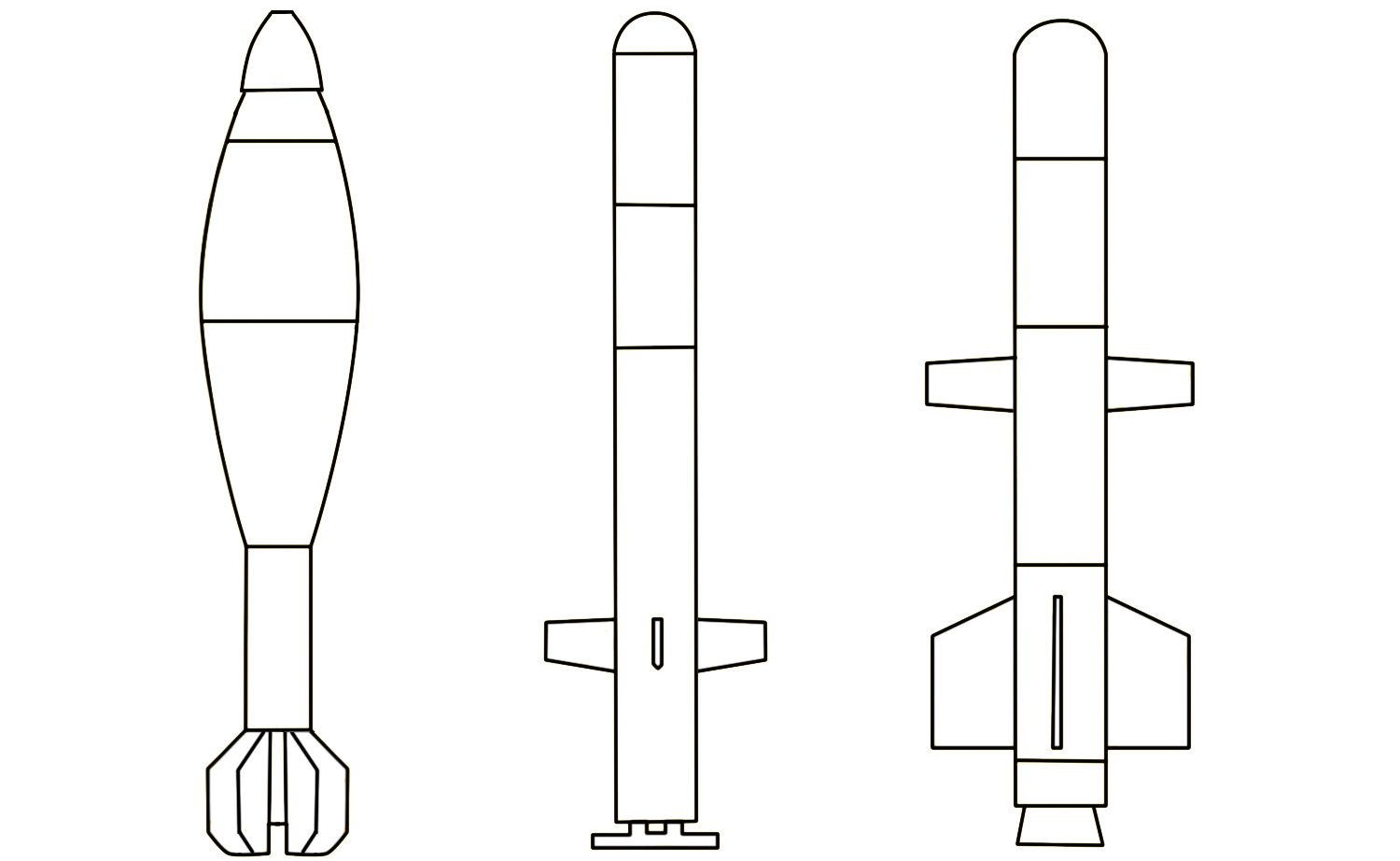Mortar projectiles
Mortar projectiles are gun-launched indirect-fire that are typically unguided. Mortar projectiles generally consist of a fuze (most often mounted in the nose of the munition), a body with one or more obturating rings
 A recessed groove around the body of a projectile
, and a tail assembly with flash holes and fins
A recessed groove around the body of a projectile
, and a tail assembly with flash holes and fins
 Fixed or adjustable vanes, typically attached to the body of a projectile
. This layout gives the munition a distinctive ‘teardrop’ shape toward the tail. The tail assembly with flash holes and obturating rings are characteristic of a mortar projectile.
Fixed or adjustable vanes, typically attached to the body of a projectile
. This layout gives the munition a distinctive ‘teardrop’ shape toward the tail. The tail assembly with flash holes and obturating rings are characteristic of a mortar projectile.
Mortar projectiles are fired from mortars. These are often relatively portable and are typically fitted with smoothbore (i.e., unrifled) barrels. Most mortars incorporate a stabilising baseplate that transmits recoil forces to the supporting surface. Compared with artillery gun barrels, a mortar barrel for a given calibre is generally shorter and lighter.
Most mortars are muzzle-loading weapons, in which the mortar projectile is fired by dropping it, tail-end first, down the muzzle of a mortar barrel (sometimes called a ‘tube’). When the tail end of the mortar projectile reaches the base of the mortar tube, it strikes a fixed firing pin which initiates an impact-sensitive propellant charge in the projectile’s tail, accelerating the projectile out of the mortar and towards a target. The mortar is now ready to fire again. In flight, the mortar projectile normally follows a ballistic trajectory
 The motion of unpowered, unguided munitions that move along a curved path under the action of only gravity and air resistance
.
The motion of unpowered, unguided munitions that move along a curved path under the action of only gravity and air resistance
.
Generally, mortars are used to provide indirect fire at high angles. Mortars are predominantly used against personnel and light vehicles, providing rapidly available, responsive fire in support of manoeuvring ground troops. They are typically robust, simple weapons which can be reloaded and fired relatively quickly.
Mortar projectiles have a typical range of between 50 and 9000 metres, making them a short-range munition compared to artillery gun projectiles.
Unassisted Mortar Projectile
An unassisted (or ‘typical’) mortar projectile is one which, after being fired, continues in motion only by its own momentum. It is not fitted with a rocket motor or any other propulsion system.
Rocket-assisted Mortar Projectile
A rocket-assisted mortar projectile is one which uses a rocket motor to maintain its rate of travel, resulting in an overall extended range but reduced payload compared to other mortar projectiles of the same calibre.